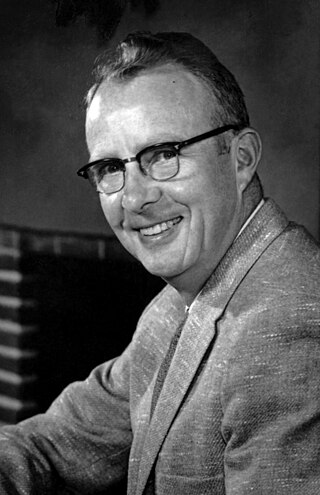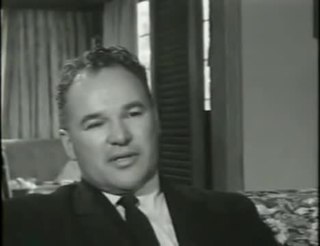The term foo fighters was used by Allied aircraft pilots during World War II to describe various unidentified flying objects or mysterious aerial phenomena seen in the skies over both the European and Pacific theaters of operations.
On January 7, 1948, 25-year-old Captain Thomas F. Mantell, a Kentucky Air National Guard pilot, died when he crashed his P-51 Mustang fighter plane near Franklin, Kentucky, United States, after being sent in pursuit of an unidentified flying object (UFO). Mantell pursued the object in a steep climb and disregarded suggestions to level his altitude. At high altitude, he blacked out from a lack of oxygen; his plane went into a downward spiral and crashed. The incident was among the most publicized of early UFO reports. Later investigation by the United States Air Force's Project Blue Book indicated that Mantell died chasing a Skyhook balloon, which, in 1948, was a top-secret project that he would not have known about.

The Robertson Panel was a scientific committee which met in January 1953 headed by Howard P. Robertson. The Panel arose from a recommendation to the Intelligence Advisory Committee (IAC) in December 1952 from a Central Intelligence Agency (CIA) review of the U.S. Air Force investigation into unidentified flying objects, Project Blue Book. The CIA review itself was in response to widespread reports of unidentified flying objects, especially in the Washington, D.C. area during the summer of 1952.
Green fireballs are a type of unidentified flying object (UFO) that has been reported since the early 1950s. Early sightings primarily occurred in the southwestern United States, particularly in New Mexico. Although some ufologists and ufology organizations consider green fireballs to be of artificial extraterrestrial origin, mainstream explanations have been provided, including natural bolides.

The Mariana UFO incident occurred in August 1950 in Great Falls, Montana. The film footage of the sighting, filmed by local baseball coach Nick Mariana, is believed to be among the first ever taken of what came to be called an unidentified flying object. The U.S. Air Force, after a short investigation, concluded that what had actually been sighted were the reflections of two F-94 jet fighters, a claim that would later be retracted.
Identifying unidentified flying objects (UFOs) is a difficult task due to the normally poor quality of the evidence provided by those who report sighting the unknown object. Observations and subsequent reporting are often made by those untrained in astronomy, atmospheric phenomena, aeronautics, physics, and perception. Nevertheless, most officially investigated UFO sightings, such as from the U.S. Air Force's Project Blue Book, have been identified as being due to honest misidentifications of natural phenomena, aircraft, or other prosaic explanations. In early U.S. Air Force attempts to explain UFO sightings, unexplained sightings routinely numbered over one in five reports. However, in early 1953, right after the CIA's Robertson Panel, percentages of unexplained sightings dropped precipitously, usually being only a few percent in any given year. When Project Blue Book closed down in 1970, only 6% of all cases were classified as being truly unidentified.

The 1976 Tehran UFO Incident was a radar and visual sighting of an unidentified flying object (UFO) over Tehran, the capital of Iran, during the early morning hours of 19 September 1976. During the incident, two Imperial Iranian Air Force F-4 Phantom II jet interceptors reported losing instrumentation and communications as they approached the object. These were restored upon withdrawal. One of the aircraft also reported a temporary weapons systems failure while the crew was preparing to open fire. An initial report of the incident was relayed to the U.S. Joint Chiefs of Staff on the day of the incident.
This is a list of alleged sightings of unidentified flying objects or UFOs in Iran.
The Chiles-Whitted UFO encounter occurred at approximately 2:45 AM on July 24, 1948, in the skies near Montgomery, Alabama, United States. Two commercial pilots, Clarence S. Chiles and John B. Whitted, claimed to have observed a "glowing object" pass by their plane before it appeared to pull up into a cloud and travel out of sight.
The Chicago O'Hare UFO sighting occurred on November 7, 2006, around 4:15 p.m. when 12 United Airlines employees and a few witnesses outside O'Hare International Airport reported a sudden UFO sighting. The Federal Aviation Administration refused to investigate the matter because this unidentified flying object (UFO) was not seen on radar, instead calling it a "weather phenomenon".
This is a list of notable alleged sightings of unidentified flying objects (UFOs) in the United Kingdom. Many more sightings have become known since the gradual release, between 2008 and 2013, of the Ministry of Defence's UFO sighting reports by the National Archives. In recent years, there have been many sightings of groups of slowly moving lights in the night sky, which can be easily explained as Chinese lanterns. Undertaken between 1997 and 2000, Project Condign concluded that all the investigated sightings of unidentified aerial phenomena in the UK could be attributed to misidentified but explicable objects, or poorly understood natural phenomena.

Jimmy Carter, United States president from 1977 until 1981, reported seeing an unidentified flying object while at Leary, Georgia, in 1969. While serving as governor of Georgia, Carter was asked by the International UFO Bureau in Oklahoma City to file a report of the sighting, and he filed a statement on September 18, mailed September 20. Since its writing, the report has been discussed several times by both ufologists and by members of the mainstream media.

From July 12 to 29, 1952, a series of unidentified flying object (UFO) sightings were reported in Washington, D.C., and later became known as the Washington flap, the Washington National Airport Sightings, or the Invasion of Washington. The most publicized sightings took place on consecutive weekends, July 19–20 and July 26–27. UFO historian Curtis Peebles called the incident "the climax of the 1952 (UFO) flap"—"Never before or after did Project Blue Book and the Air Force undergo such a tidal wave of (UFO) reports."
The Exeter incident or Incident at Exeter was a highly publicized UFO sighting that occurred on September 3, 1965, approximately 5 miles (8 km) south of Exeter, New Hampshire, in the neighboring town of Kensington. Although several separate sightings had been made in the area by numerous witnesses in the weeks leading up to the specific incident, it was the September 3 sighting which eventually became by far the most famous, involving a local teenager and two police officers. In 2011, Skeptical Inquirer offered an explanation of the incident, based on details reported by the eyewitnesses.
The Gorman dogfight was a widely publicized UFO incident which took place on October 1, 1948, in the skies over Fargo, North Dakota, United States. United States Air Force (USAF) Captain Edward J. Ruppelt wrote in his bestselling and influential The Report on Unidentified Flying Objects that the "dogfight" was one of three "classic" UFO incidents in 1948 that "proved to [Air Force] intelligence specialists that UFOs were real," along with the Chiles-Whitted UFO encounter and the Mantell UFO incident. In 1949, the official explanation made by the USAF was that the Gorman dogfight had been caused by a lighted weather balloon.
The Lakenheath-Bentwaters Incident was a series of radar and visual contacts with unidentified flying objects over airbases in eastern England on the night of 13–14 August 1956, involving personnel from the Royal Air Force (RAF) and the United States Air Force (USAF). The incident has since gained some prominence in the literature of ufology and the popular media.
Japan Air Lines Cargo Flight 1628 was a Japanese Boeing 747-200F cargo aircraft flying from Paris to Narita International Airport that was involved in an unidentified flying object (UFO) sighting on November 17, 1986. During the flight, Captain Kenji Terauchi reported seeing three objects he described as "two small ships and the mother ship". The FAA in Anchorage only saw Flight 1628 on their radar. Two other nearby planes only saw Flight 1628 and no other objects. An FAA investigation of the incident characterized Terauchi as a "UFO repeater". Astronomers and investigators have determined that Terauchi probably mistook the planets Jupiter and Mars as UFOs. Contradictions among the accounts of the crew from the three aircraft as well as contradictions between the transcripts and later interviews with Terauchi have cast doubt that anything unusual happened.

The Kenneth Arnold UFO sighting occurred on June 24, 1947, when private pilot Kenneth Arnold claimed that he saw a string of nine, shiny unidentified flying objects flying past Mount Rainier at speeds that Arnold estimated at a minimum of 1,200 miles an hour (1,932 km/h). This was the first post-World War II sighting in the United States that garnered nationwide news coverage and is credited with being the first of the modern era of UFO sightings, including numerous reported sightings over the next two to three weeks. Arnold's description of the objects also led to the press quickly coining the terms flying saucer and flying disc as popular descriptive terms for UFOs.

In the afternoon of 23 April 2007, Ray Bowyer, a pilot flying south towards the island of Alderney in the English Channel sighted unidentified flying objects. He reported the sighting to an air traffic controller who told him that a second pilot had seen something similar. In Bowyer's report to the British Civil Aviation Authority he said he saw two bright, stationary objects. Two passengers on Bowyer's aircraft said that they saw unusual coloured lights at the same time. Proposed explanations for the sighting have included earthquake lights and sun dogs.
UFO is a 1956 American semi-documentary about the development of the UFO phenomenon in the United States. Clips from the documentary have often been used in other UFO documentaries and television episodes related to UFOs.






